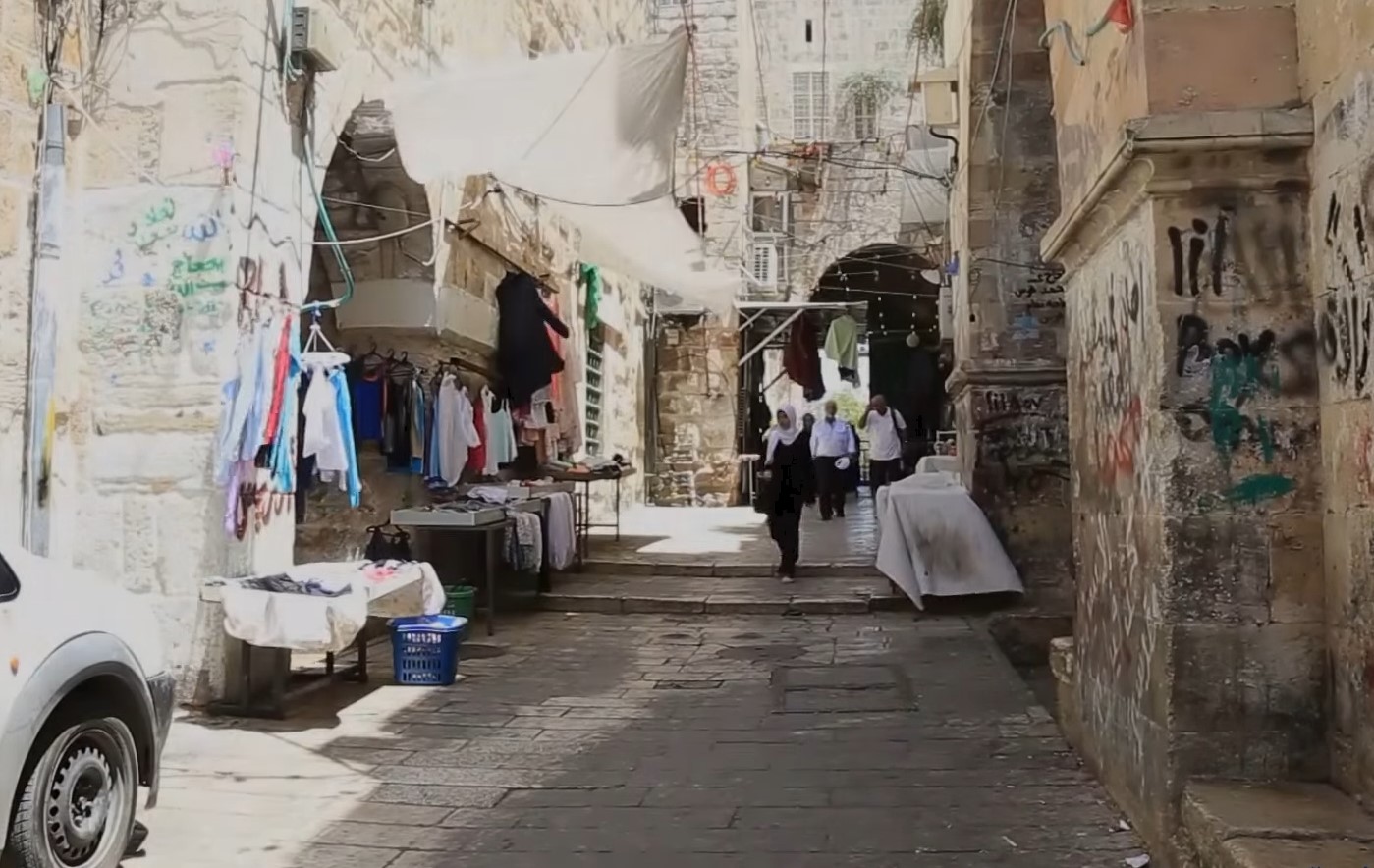The African community
The members of the African community in Palestine are Palestinians of African descent, some of whose ancestors accompanied Ibrahim Pasha in his famous campaign on Palestine during the reign of Muhammad Ali Pasha the Great, who was the governor of Egypt in the late years of the Ottoman Empire. They live in the city of Jerusalem in close proximity to one of the gates of the Holy Temple Mount called Bab al-Nazer (door of the council), which is located in the Western Wall of the Al-Aqsa Mosque. They live in a narrow space called the "slave confinement" within two bonds: the bond of Aladdin the visionary, and the bond of Mansouri.
During the Mamluk era, the slave-holding area was used as a rest stop for pilgrims coming to the Al-Aqsa Mosque and the dome of the rock to sanctify their pilgrimage after they performed their duties in Mecca. The buildings of the area inhabited by the African community were called the slave prison because they were used as a prison at the time of the Ottomans.
The members of the African community are distinguished by their brown skin, which indicates their African origins, and they consider themselves an integral part of Palestine, the cause, land, people and holy places.

The presence of Africans in Palestine dates back to the time of the Islamic conquests, specifically when Caliph Omar ibn al-Khattab entered the city of Jerusalem accompanied by a number of them, as for the African community currently in the city of Jerusalem, whose roots go back to the countries of Chad, Nigeria, Sudan, and Senegal, its sons came in the late nineteenth century, and they are descended from eight tribes: Salamat, Borno, Takruri, ferawi, Huss, burju, kalmbo, and Falat. The reasons for their coming to the holy city are almost limited to two fundamental reasons::
The first is religious:
They came to spend what is described as the holy pilgrimage, coming from Mecca after performing the Hajj rituals there, and in this case they have made a pilgrimage to the three main sites that travelers are attracted to according to Islamic law, namely, the Grand Mosque in Mecca, the Prophet's mosque in Medina, and the Al-Aqsa Mosque in Jerusalem.
The second is a jihadist:
They came to defend the Islamic holy sites against the British Mandate and then the Israeli occupation, and took it upon themselves to guard and protect the Temple Mount, and provide services to worshippers. Many members of the African community participated in the battles fought by the Palestinians against the Zionist movement, the most prominent of which was the Battle of Jabal al-Mukaber, led by Mohammed Tariq Al-afriqi, and those with him from the Palestinian and Jordanian forces were able to save Jabal al-Mukaber and its surroundings from the Israeli occupation in 1948.
Their number:
According to the" African Community Association": members of the African community belong to four African countries: Chad, Nigeria, Senegal, and Sudan; according to the chairman of the administrative body of the African Community Association (Nasser Qous) in June 2023: the African community includes about 370 African families living in houses located in the" Bab al-Majlis " area near the Al-Aqsa Mosque.
The number of members of the African community dwindled after the June war in 1967, due to the displacement of a large number of them to Jordan and the rest of the Palestinian diaspora countries; according to the president of the Association: the number of members of the African community is increasing until it reached in 2022 about 1000 members.
This community is young; the majority of its children are under the age of twenty. The percentage of males among them is estimated at 52% and females at 48%.
Residential conditions:
The residential conditions of the African community are no different from the conditions of the rest of the people of the Old City of Jerusalem, where their homes suffer from high population density, lack of privacy to a large extent, in addition to the lack of ventilation and natural lighting, and high humidity, the rooms are very narrow, and glued together, they were basically not built for the purpose of housing families, but to accommodate individuals, while one room was called a "retreat". Due to the strong desire to stay with Al-Aqsa and the lack of material resources, the members of the African community were forced to build additional rooms in open courtyards, in some cases up to three floors.
The situation may sometimes reach such a point that some young couples from the community are forced to share their families with the small rooms they live in, most of which are no more than 2.5×3 meters, which creates multiple social problems, and this prompted some community members who were lucky with a relatively good financial situation to rent a home outside the Old Town.
